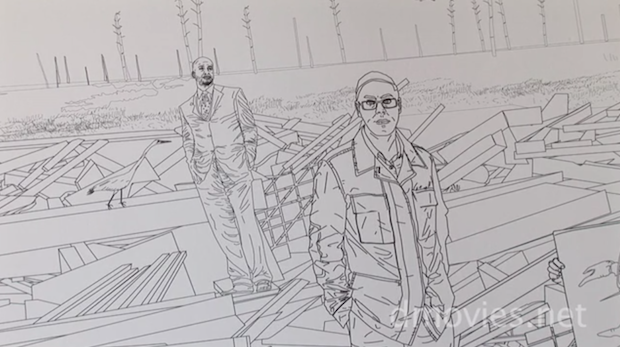
Screen shot from Cao Fei and Map Office’s animation and drawing installation for Prospect 1 in New Orleans, 2008 (Image courtesy of vimeo http://vimeo.com/29766088 )
Why are there only two females in “Ink Art,” the Metropolitan Museum of Art’s first show of contemporary Chinese art? We didn’t get the answer from the curator, and the head of the Met’s Asian art department, Maxwell Hearn, who did not return our request for comment.
Whatever the reasons, we know it isn’t a representative sample of Chinese art makers using ink; even the higher proportion of males in China, thanks to the One Child Policy, hardly compensates for the exhibition’s ratio of thirty-three men to two women.
Aside from females Xing Danwen and Duan Jianyu, the show “Ink Art” comprises a core mid-career males who are well-known to American art audiences: Ai Wei Wei, Song Dong, Hong Hao, Wu Shanzhuan. Several have been the subject of 2013 museum exhibitions like Yang Fundong, US resident Xu Bing, and Ai Wei Wei.
Is it that few contemporary Chinese females have achieved that same level of fame as those listed above? One might think so from the Rubell Collection’s current show “28 Chinese” in Miami, which also only includes two females (Li Shurui and Fang Lou) and several overlapping contributors with “Ink Art”. At least, similarities with the Rubell show suggests that “Ink Art” reflects the art market.
But it’s hard to believe that there aren’t some missed opportunities; “Ink Art” contributor Song Dong, for example, frequently collaborates with his wife Yin Xiuzhen. Why isn’t her name on the list? Also absent is Cao Fei, who’s one of the most significant artists we can think of, period, and wall drawings she made from Prospect 1 perfectly illustrates “Ink Art”’s idea of bridging traditionalism and the contemporary: “artworks” (mostly ink-related) “that may best be understood as part of the continuum of China’s traditional culture.” Moving beyond traditions, a nearly all-male roster seems like a big oversight.


Comments on this entry are closed.